Are you looking to create a timeless, elegant, and comfortable living space? If so, the Traditional Interior Design Style might be the perfect choice for you. This classic design approach embraces symmetry, intricate details, and a sense of warmth that can make any room feel inviting and luxurious. In this article, we’ll delve into the history of Traditional Interior Design, explore its key elements, and provide tips for incorporating it into your home. So, let’s dive into the world of Traditional Interior Design and discover how to create a sophisticated and cozy atmosphere in your living space.
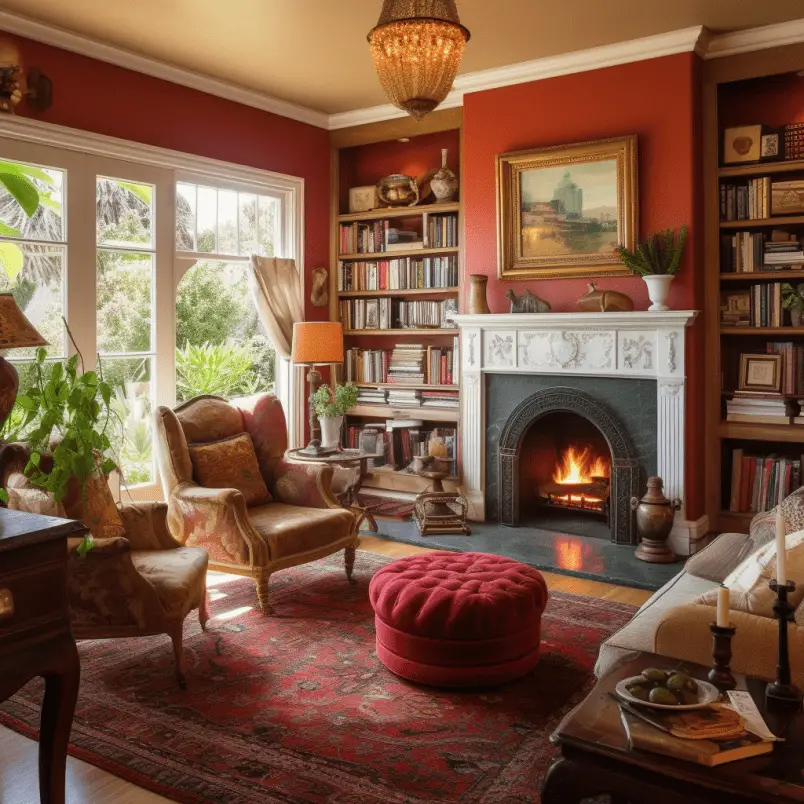
Table of Contents
History of Traditional Interior Design Style
Traditional Interior Design Style finds its roots in the 18th and 19th centuries, drawing inspiration from European styles such as Georgian, Victorian, and French country. The style is characterized by its refined elegance, attention to detail, and a focus on comfort and functionality. As time has passed, Traditional Interior Design has evolved to incorporate elements from different time periods and cultures, creating a timeless and adaptable design approach that appeals to a wide range of tastes.
Key Elements of Traditional Interior Design Style
Symmetry and Balance
One of the hallmarks of this Design is the emphasis on symmetry and balance. This can be achieved through the arrangement of furniture, artwork, and accessories, creating a harmonious and visually pleasing environment.
Classic Furniture
Traditional furniture pieces are typically made of rich, dark woods and feature intricate details such as carved moldings, turned legs, and tufted upholstery. These timeless pieces exude a sense of luxury and sophistication, making them the perfect foundation for a this Interior Design scheme.
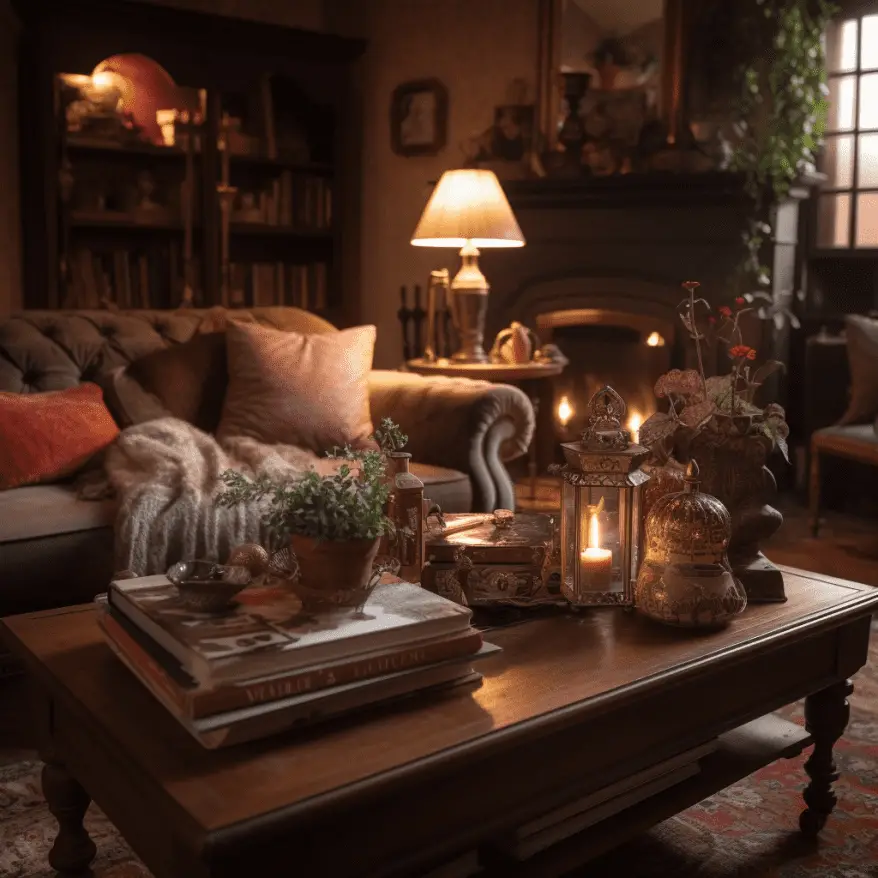
Rich Fabrics
Luxurious fabrics such as silk, velvet, and brocade are often used to create a sense of opulence and warmth. These fabrics can be incorporated through upholstery, window treatments, and accent pillows, adding texture and depth to the space.

Detailed Moldings and Architectural Elements
Traditional spaces often feature elaborate moldings, wainscoting, and built-in cabinetry to create a sense of grandeur and refinement. These architectural elements not only add visual interest but also help to frame and define the room.
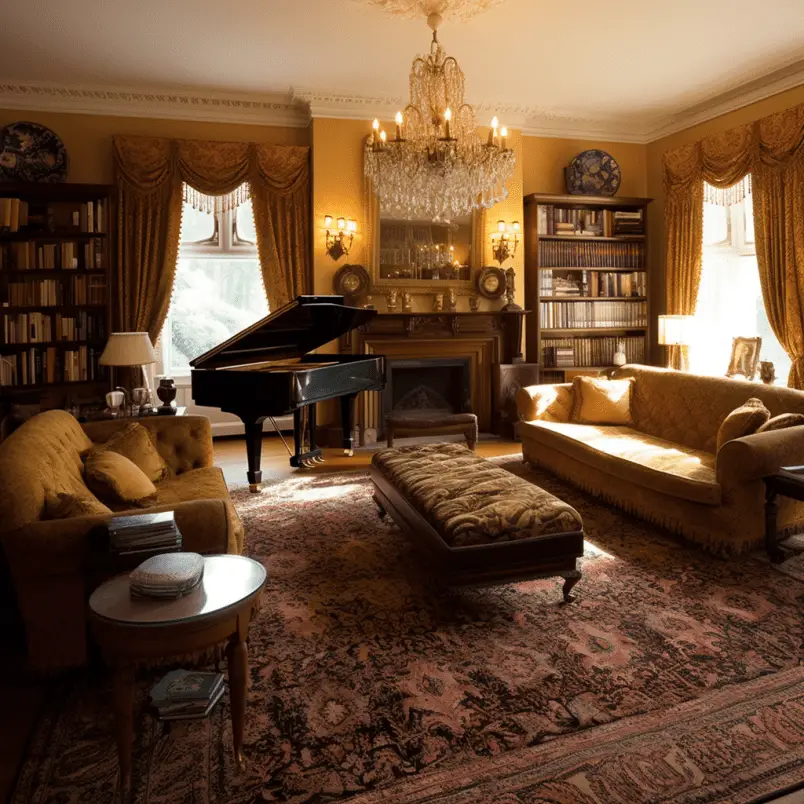
Warm, Neutral Color Palette
The color palette is typically dominated by warm, neutral tones such as beige, cream, and taupe, which create a soothing and inviting backdrop for the space. Pops of color can be added through accessories and artwork to provide contrast and visual interest.

How to Incorporate Traditional Interior Design into Your Home
Incorporating Traditional Interior Design into your home doesn’t have to be daunting. Start by focusing on the key elements mentioned above, and gradually introduce them into your space. Here are some tips to help you get started:
- Choose Classic Furniture: Invest in high-quality, timeless furniture pieces that exude elegance and sophistication. Opt for items with rich wood finishes, tufted upholstery, and intricate detailing to create a sense of luxury and refinement.
- Embrace Symmetry: Arrange your furniture, artwork, and accessories symmetrically to create a sense of balance and harmony in the space. This will help to make the room feel more cohesive and visually pleasing.
- Incorporate Rich Fabrics: Add warmth and texture to your space by using luxurious fabrics like silk, velvet, and brocade. Incorporate these materials in upholstery, window treatments, and accent pillows to create a cozy and inviting atmosphere.
- Highlight Architectural Elements: Emphasize the architectural features in your home, such as moldings, wainscoting, and built-in cabinetry. These elements not only add visual interest but also contribute to the overall Traditional aesthetic.
- Use a Warm, Neutral Color Palette: Create a soothing and inviting backdrop for your space by using a warm, neutral color palette. Introduce pops of color through accessories and artwork to add contrast and visual interest.
Traditional Interior Design in Different Rooms
You can incorporate Traditional Interior Design in any room of your home, from the living room to the bedroom. Here are some ideas for bringing this style into different spaces:
Living Room
Opt for classic furniture pieces, such as a Chesterfield sofa and wingback chairs, to create a cozy seating area. Add a Persian rug and traditional artwork to complete the look.
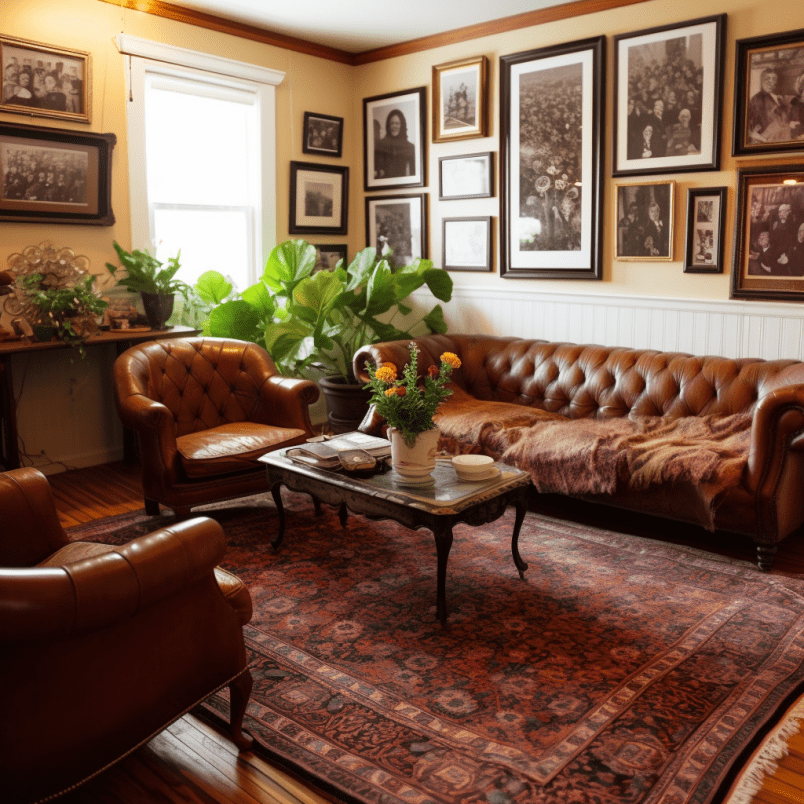
Dining Room
Choose a traditional dining table with elegant, high-backed chairs and a sideboard for storage. Use rich fabrics for window treatments and chair upholstery, and display a classic chandelier for a touch of grandeur.

Bedroom
Invest in a luxurious, upholstered bed and traditional wooden nightstands. Use a warm color palette for bedding and curtains, and incorporate a plush area rug for added comfort.
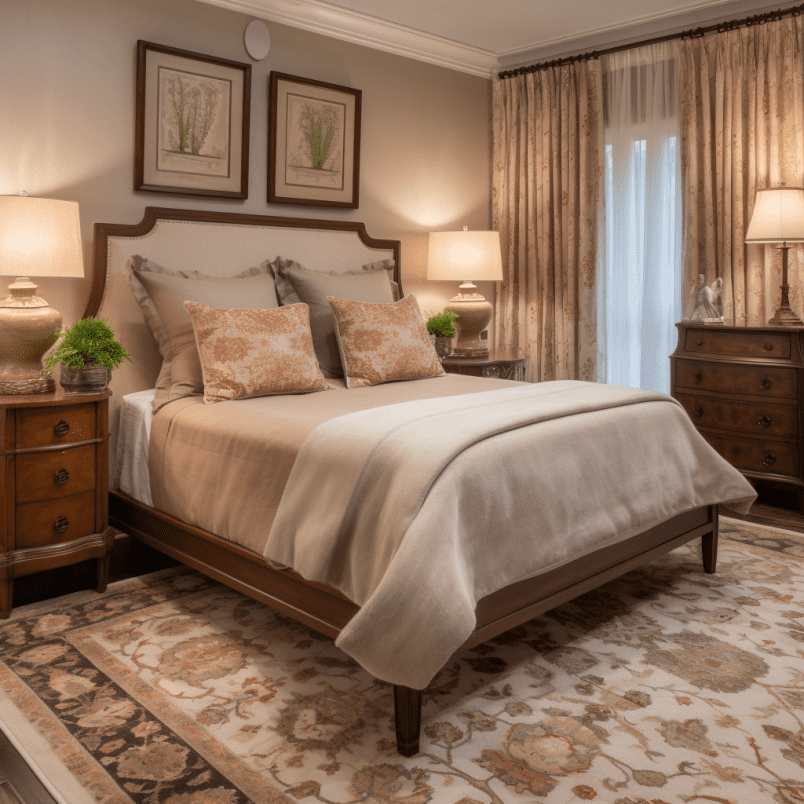
Kitchen
Opt for classic wooden cabinetry with detailed moldings, and consider a farmhouse sink and vintage-style appliances for a touch of nostalgia. Use a neutral color palette for walls and countertops, and incorporate patterned tiles or a traditional rug for added warmth.
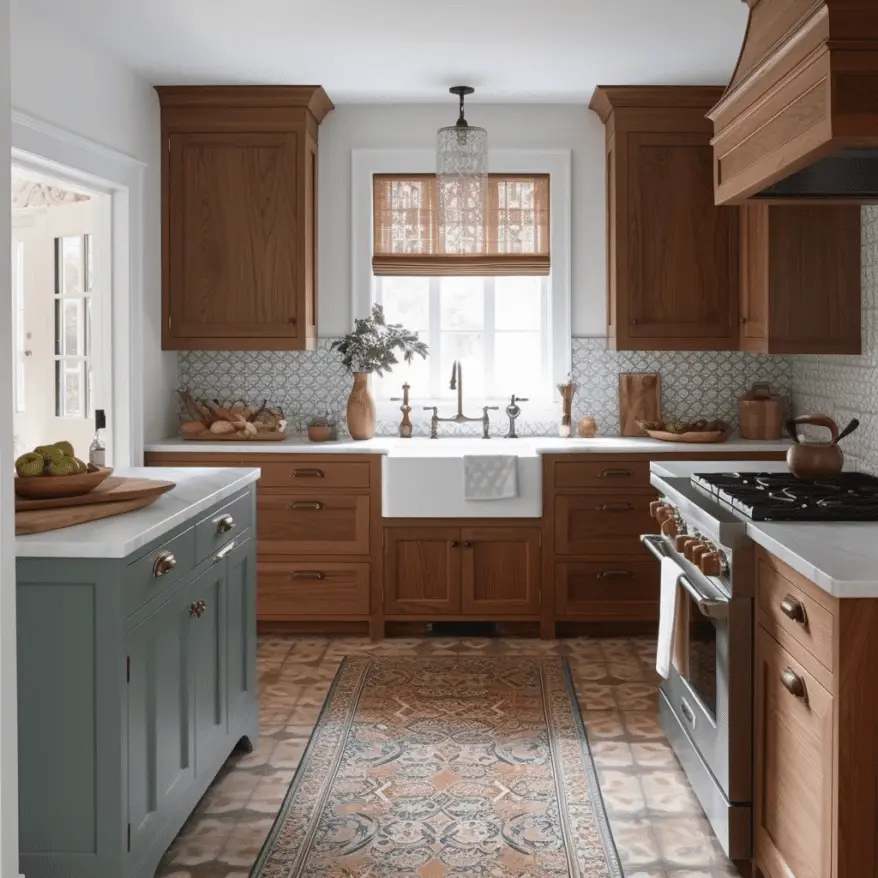
Bathroom
Choose a freestanding clawfoot tub and a classic vanity with ornate detailing. Incorporate rich fabrics in the form of plush towels and a shower curtain, and use warm, neutral colors for walls and tiles.

Pros and Cons of Traditional Interior Design
Like any design style, Traditional Interior Design has its advantages and disadvantages. Here are some pros and cons to consider before committing to this aesthetic:
Pros:
- Timeless Appeal: Traditional Interior Design is a classic and enduring style that won’t go out of fashion, making it a smart choice for those who want a long-lasting look.
- Comfort and Elegance: This design approach focuses on creating a comfortable and luxurious atmosphere, making your home feel warm, inviting, and sophisticated.
- Versatility: Traditional Interior Design can be adapted to suit a variety of tastes and preferences, as it incorporates elements from different time periods and cultures.
Cons:
- Expensive: The emphasis on high-quality materials and craftsmanship can result in higher costs, particularly when it comes to furniture and fabrics.
- Less Appeal to Minimalists: Those who prefer a more minimalist or contemporary aesthetic may find it to be too ornate or heavy-handed.
Conclusion
Traditional Interior Design Style offers a timeless, elegant, and comfortable design approach that appeals to a wide range of tastes. By incorporating key elements such as classic furniture, rich fabrics, and detailed architectural elements, you can create a sophisticated and inviting living space that will stand the test of time. While it may not suit everyone’s preferences, Traditional Interior Design provides a versatile and enduring option for those looking to create a warm, luxurious atmosphere in their home.
FAQ
What is the main focus of Traditional Interior Design Style?
The main focus of Traditional Interior Design Style is creating a timeless, elegant, and comfortable living space by using classic furniture, rich fabrics, and intricate architectural details.
What are the typical color schemes used in Traditional Interior Design?
Traditional Interior Design typically features a warm, neutral color palette of beige, cream, and taupe, with pops of color added through accessories and artwork.
Can I mix Traditional Interior Design with other styles?
Yes, you can mix Traditional Interior Design with other styles, as long as you maintain a cohesive look by carefully selecting pieces that complement each other and adhere to a consistent color palette.
What materials are commonly used in Traditional Interior Design?
Common materials used in Traditional Interior Design include rich, dark woods, luxurious fabrics such as silk, velvet, and brocade, and intricate architectural elements like moldings and wainscoting.
Is Traditional Interior Design suitable for small spaces?
Yes, Traditional Interior Design can be adapted to small spaces by carefully selecting furniture pieces and accessories that fit the scale of the room and using a more muted color palette to avoid overwhelming the space.

